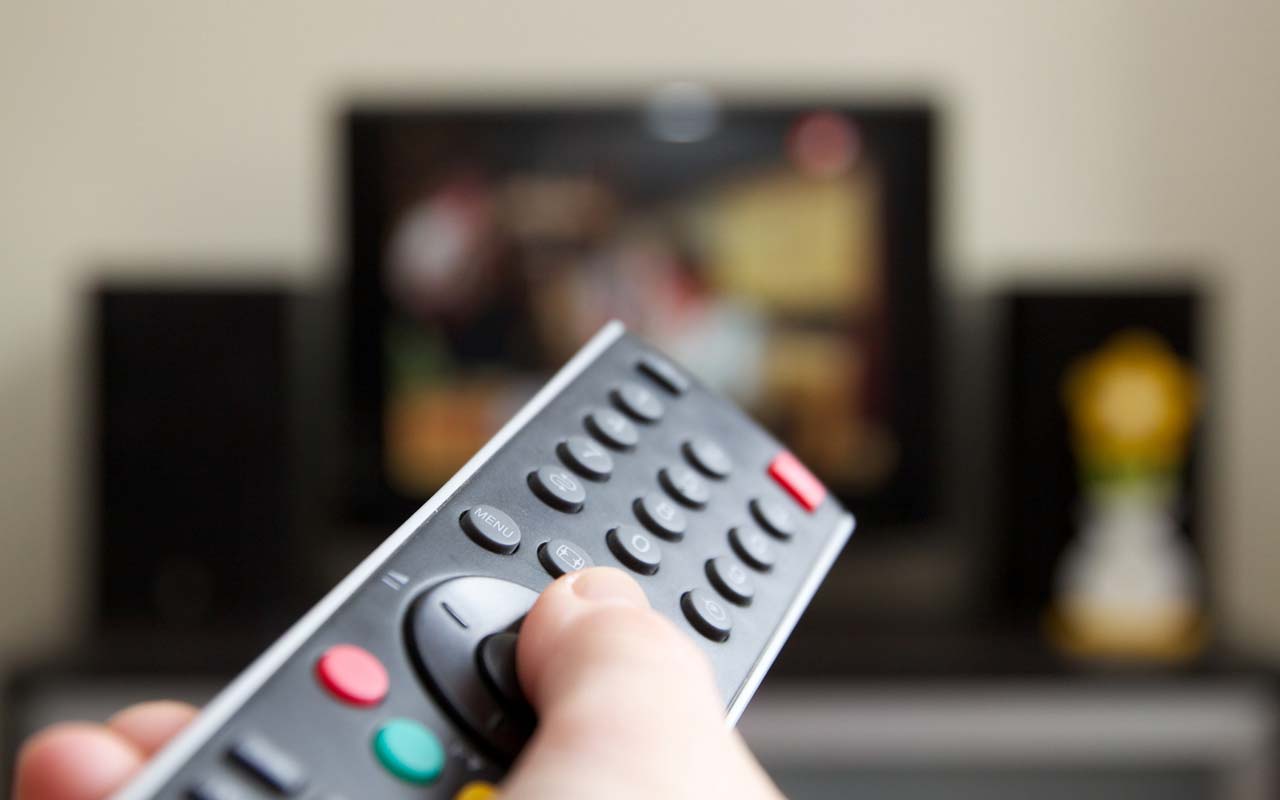9 Things Millennials Are Changing Forever (Like It or Not)
It's not always easy being a millennial.


It's not always easy being a millennial. Born between 1981 and 1996, many members of this generation came of age during the Great Recession of 2007-2009. Jobs were scarce, student loans were staggering, and more than a few millennials were forced to call their parents' basements home. The economic experience left financial scars, for sure, but it also helped shape the nature of what's collectively known as Generation Y, a generation that's on the verge of surpassing baby boomers in sheer numbers.
Now that millennials are full-fledged adults, with their ages today ranging from early 20s to late 30s, these Gen Yers are starting to have a profound impact on everything from diverse industries (fast food and cable TV) to sacred institutions (marriage and homeownership). What's more, millennials are more educated, more diverse and more tech-savvy than previous generations -– all factors influencing how they live, work, spend and save.
Take a closer look at nine things millennials are changing forever with their lifestyle choices and spending habits.

Eating Out at Casual-Dining Restaurants
Traditional casual-dining chains (think: sit-down establishments such as Olive Garden or IHOP) have struggled to keep up in today's rapidly changing restaurant industry. A big part of the reason why? Millennials' vastly different preferences when dining out compared to baby boomers and Gen Xers. Millennials want HGTV-worthy decor (because, well, Instagram), health-conscious menus with lots of options including organics, quick service and low prices, according to the National Restaurant Association. Since millennials are on track to become the biggest spenders at restaurants within the next decade, according to CBRE's 2019 Food In Demand: Consumers report, the chains that fail to adapt fast enough will pay the steepest price.
Casual-dining chains are already succumbing to changing tastes. Within the past year alone, the share of millennials who visited casual-dining restaurants more than once a week has dropped from 59% to 55%, according to consumer data compiled by RestaurantBusinessOnline.com and its sister company Technomic, which provides consumer analysis for the foodservice industry. Fewer visits by millennials signals fewer dollars being spent. As a result, many casual-dining chains are scrambling to figure out the secret sauce to attract and retain millennial diners.
They don't have to look far for answers. Fast-casual restaurants such as Chipotle and Cava, where your food is prepared on the spot in an assembly line, have become go-tos for Gen Yers looking to get a quick meal that's affordable – and one that's not a burger and fries. In addition to offering cheap eats, fast-casual restaurants usually offer customer loyalty programs that can be accessed via a smartphone. These programs allow diners to rack up rewards points with every purchase that can help them score free meals and other discounts.

Buying Starter Homes
Buying a first home is a major milestone of adulthood. However, for many millennials, becoming a homeowner isn't a realistic goal any time soon. The rate of homeownership among millennials ages 25 to 34 is 37.0%, about 8 percentage points lower than when baby boomers (45.0%) and Gen Xers (45.4%) were the same ages, according to the Urban Institute's 2018 Millennial Homeownership report.
Millennials face a unique set of financial-related barriers when it comes to homeownership, the report found. Notably, millennials prefer living in high-cost cities where affordable housing options are extremely limited. Student loan debt also hurts millennials' ability to save enough cash for a down-payment on a house. With the national median price of an existing single-family home totaling $254,800, it's difficult for many millennials to come up with the $50,960 that's needed to make a traditional 20% down-payment.
As a result, they're choosing to rent longer. In fact, just 5% of the 6,400 renters surveyed in ApartmentList.com's 2018 Millennial Homeownership Report: American Dream Delayed said they plan to buy within a year, while 34% said they expected to wait at least five years.

Shopping at Bricks-and-Mortar Retailers
Millennials have major buying power, spending nearly $600 billion every year, according to CouponFollow.com's 2019 Millennial Shopping Report. While they love the convenience of online shopping -- two-thirds of millennial shoppers make half or more of their purchases on Amazon.com -- they still like to make in-store purchases, too. However, millennials do have unique shopping and spending habits that differ from baby boomers and Gen Xers.
Start with smartphones. It's no secret that millennials are tethered to theirs and regularly use them to shop. Those who still go in-store will often go online first to research a product and read customer reviews. Then, they'll visit a store to see the product in-person to ensure it's exactly what they want. Where some bricks-and-mortar chains are dropping the ball is by not providing a seamless shopping experience once they have millennials in-store, according to Accenture's recent survey Who Are the Millennials Shoppers? And What Do They Want? Sixty-eight percent of survey respondents said they want an integrated shopping experience regardless of the channel (i.e., laptop, smartphone or in-store).
What that means, for example, is if a retailer e-mails an online discount code, Gen Yers wants to be able to get that same discount in-store by simply scanning the code at checkout with their smartphone. Considering that CouponFollow.com found that 95% of millennials say they search online for discount codes and coupons before making a purchase, this is a big deal for them. So, having to print out coupons prior to visiting a store can be a deal-breaker, Accenture points out.

Working Out at Traditional Gyms
Gen Y favors specialized fitness experiences over traditional gyms (think: Planet Fitness or Gold's Gym). Just 35% of core health club members are millennials, according to the 2018 IHRSA Health Club Consumer Report, which provides demographics and related data on health club users.
- Boutique fitness studios -- from Bikram Yoga to CrossFit -- that offer unique workout programs conducted in group settings are getting millennials to spend big. For example, the average cost of a monthly gym membership (with unlimited access to a variety of fitness equipment) totals $34, according to MyProtein.com's 2018 American Health & Fitness Survey, which examined how much time and money people dedicate to their workout regimen. By comparison, it costs $32 for a single spin class at SoulCycle, a popular boutique cycle studio.
Why the switch? Millennials are a social generation and enjoy doing things in groups. Boutique fitness studios provide a sense of community by allowing them to break a sweat with friends versus running on the treadmill alone at a traditional gym. Also, ClubIndustry.com's recent report Trends That Will Affect the Fitness Industry in 2019 points out that one of the reasons boutique fitness studios have become so popular with Gen Y is that they usually have mobile apps. This allows customers to quickly register for (or cancel) classes on-the-go. In addition, there's no commitment with boutique gyms. Most allow you to take classes ad-hoc without having to foot the bill for an annual membership.

Joining Warehouse Clubs
Costco, Sam's Club and BJ's have been longtime favorites of families and retirees who like to stock up on household essentials. However, warehouse clubs haven't resonated quite the same with younger consumers who aren't parents. One reason: Warehouse clubs tend to focus on the in-store experience, from endless free food samples to plenty of places to sit and rest while shopping. Meanwhile, their e-commerce offerings have left much to be desired by millennials who shop primarily online using phones, computers and tablets.
- Stiff competition from the likes of Amazon.com and Boxed.com is forcing warehouse clubs to step it up online. To help entice club members to make Costco.com a regular part of their online shopping routine, the bulk retailer now offers exclusive members-only flash sales on everything from laptops to clothing to major appliances. You can even shop for groceries online with the option of in-store pick-up or two-day shipping for non-perishable food and household items.
At Sam's Club, members can take advantage of exclusive deals available on the warehouse club's website. If you're in a time crunch and don't want to click around to find your favorite products, simply select the Frequently Ordered tab on the homepage to re-order your household staples. Sam's Club even rewards online shoppers who spend at least $60 on qualifying products by giving them a $15 e-card that's good toward future purchases.

Signing Up for Cable TV
The number of consumers cutting the cord from expensive cable and satellite TV providers continues to rise with budget-conscious millennials leading the way. A recent survey conducted by the Pew Research Center found that 60% of young adults in the U.S. primarily use internet streaming services to watch television. The convenience that comes with being able to watch your favorite television shows on your laptop or mobile device on-the-go is a big draw for tech-savvy millennials. You can tune in from practically anywhere, no matter if you're catching a flight or commuting to or from work on the train.
With the price of popular streaming services such as Netflix (starting at $8.99 monthly) and Hulu (starting at $5.99 monthly) significantly cheaper than commonly used cable providers including Comcast Xfinity (plans start at $30 per month) and Verizon Fios (plans start at $65 per month), ditching traditional cable TV seems like a no-brainer for younger adults on a tight budget. In fact, the number of homes without traditional cable TV service hit 48% last year, according to Nielsen's 2019 Local Watch Report.

Eating Unhealthy Fast Food
A diet high in fatty foods and sugary beverages can have damaging effects on your health over time. Gen Y is taking this to heart. Rather than washing down a cheeseburger and fries with a soda the size of a liter bottle, millennials are opting for healthier alternatives. In fact, more than 50% of parents who buy organic foods are millennials, according to the Organic Trade Association. With that said, Gen Y's food spending habits are paving the way for rapid change in the fast-food industry.
The growing trend has led quick-service restaurants that offer healthier food selections (in addition to being tech-friendly) to gain in popularity with younger adults over big-name fast-food chains such as Burger King, suggests NewtonX.com, which conducted a survey of 300 restaurant executives and food industry professionals to examine shifting consumer habits. Instead of sitting in the drive-thru line, millennials are relying more on app-based meal order delivery services, such as UberEats and GrubHub, to purchase fast-food alternatives from local establishments, the survey notes.
Despite slowing sales, some fast-food giants are attempting to play catch-up. For example, McDonald's and Wendy's have added healthier items to their menus including a variety of salads, grilled chicken sandwiches and wraps, as well as fresh fruit. McDonald's even partnered with Uber Eats and now offers food delivery.

Getting Married
Unlike their parents, millennials are opting to get married later in life -- if at all. Last year, the median age for marriage was 30-years-old for a man and 28-years-old for a woman, according to the U.S. Census Bureau. By comparison, in 1975 the median ages were 25 (men) and 21 (women). What has Gen Y so skeptical about saying “I do?" A lack of economic security and access to financial resources is a major reason for avoiding the altar, according to the Census' 2018 report Millennial Marriage: How Much Does Economic Security Matter to Marriage Rates for Young Adults.
When the Great Recession hit in 2007, many millennials were just entering adulthood: having moved out of their parents' homes (with some older millennials having purchased a first home) and just starting out in their careers. Then suddenly, they're hit with record job loss, home foreclosures and huge blows to retirement savings; all while having large amounts of student loan debt. Having experienced such a major financial downfall at an early age, it's no surprise that many Gen Yers say a lack of financial security is a deal-breaker when deciding whether to get married. And thanks to glossy lifestyle magazines and celebrity reality TV wedding specials, tying the knot for many in this generation means having to spend big bucks to throw an Instagram-worthy affair, the Census points out.
While the national average cost of a wedding is nearly $34,000, it's important to remember that you don't have to spend that much. Starting a life together with your significant other shouldn't come with unnecessary debt. There are plenty of cost-cutting moves you can incorporate on your big day without sacrificing style. This includes not hiring a wedding planner, having a dessert bar instead of a tiered wedding cake and buying a pre-owned wedding dress, as suggested in our story 10 Tips & Tricks to Save on Weddings From a Financial Planner Bride.

Saving for Retirement
Although millennials are expected to live longer than baby boomers and Gen Xers, they aren't saving as much in preparation for retirement. In fact, 66% of working millennials have nothing saved for retirement despite working for an employer that offers a retirement savings plan, according to the National Institute for Retirement Security's (NIRS) 2018 report Millennials and Retirement: Already Falling Short. Contributing factors include having entered the workforce during a harsh economic climate resulting in less earning potential and high levels of unemployment, the report states.
Among those who are contributing to a retirement savings plan, most aren't saving enough. It's generally recommended that you stash at least 15% of your income when using a 401(k) plan. However, 82% of millennials save less than 6% of their income for retirement, the NIRS report revealed. For example, a working professional who's earning $70,000 annually should be saving $10,500. If that person is only saving 6%, they're banking just $4,200 a year. That's a difference of more than $6,000 -- and those missed savings quickly add up over time.
Millennials who aren't saving enough can catch up, but it takes discipline. In our story How Much Can You Contribute to a 401(k) for 2019? we explain how: Increase the amount you are saving by 2% each year until you reach 15%. For example, if you're currently saving just 3%, bump that up to 5% in 2020, then 7% in 2021, and so on.
Get Kiplinger Today newsletter — free
Profit and prosper with the best of Kiplinger's advice on investing, taxes, retirement, personal finance and much more. Delivered daily. Enter your email in the box and click Sign Me Up.

Browne Taylor joined Kiplinger in 2011 and was a channel editor for Kiplinger.com covering living and family finance topics. She previously worked at the Washington Post as a Web producer in the Style section and prior to that covered the Jobs, Cars and Real Estate sections. She earned a BA in journalism from Howard University in Washington, D.C. She is Director of Member Services, at the National Association of Home Builders.
-
 6 Stunning Waterfront Homes for Sale Around the US
6 Stunning Waterfront Homes for Sale Around the USFrom private peninsulas to lakes, bayous and beyond, Kiplinger's "Listed" series brings you another selection of dream homes for sale on the waterfront.
By Charlotte Gorbold Published
-
 Six Reasons to Disinherit Someone and How to Do It
Six Reasons to Disinherit Someone and How to Do ItWhether you're navigating a second marriage, dealing with an estranged relative or leaving your assets to charity, there are reasons to disinherit someone. Here's how.
By Donna LeValley Published
-
 What to Do With Your Tax Refund: 6 Ways to Bring Growth
What to Do With Your Tax Refund: 6 Ways to Bring GrowthUse your 2024 tax refund to boost short-term or long-term financial goals by putting it in one of these six places.
By Rachael Green Published
-
 What Does Medicare Not Cover? Eight Things You Should Know
What Does Medicare Not Cover? Eight Things You Should KnowHealthy Living on a Budget Medicare Part A and Part B leave gaps in your healthcare coverage. But Medicare Advantage has problems, too.
By Donna LeValley Published
-
 12 Great Places to Retire in the Midwest
12 Great Places to Retire in the MidwestPlaces to live Here are our retirement picks in the 12 midwestern states.
By Stacy Rapacon Published
-
 10 Cheapest Small Towns to Live In
10 Cheapest Small Towns to Live InThe cheapest small towns might not be for everyone, but their charms can make them the best places to live for plenty of folks.
By Dan Burrows Published
-
 Best Cold Weather Places to Retire
Best Cold Weather Places to RetirePlaces to live Some like it hot; others not so much. Here are the 12 best places to retire if you can't stand the heat.
By Stacy Rapacon Published
-
 15 Reasons You'll Regret an RV in Retirement
15 Reasons You'll Regret an RV in RetirementMaking Your Money Last Here's why you might regret an RV in retirement. RV-savvy retirees talk about the downsides of spending retirement in a motorhome, travel trailer, fifth wheel or other recreational vehicle.
By Bob Niedt Published
-
 The Cheapest Places To Retire in the US
The Cheapest Places To Retire in the USWhen you're trying to balance a fixed income with an enjoyable retirement, cost of living is a crucial factor to consider.
By Stacy Rapacon Published
-
 The Six Best Places to Retire in New England
The Six Best Places to Retire in New Englandplaces to live Thinking about a move to New England for retirement? Here are the best places to land for quality of life, affordability and other criteria.
By Stacy Rapacon Last updated
